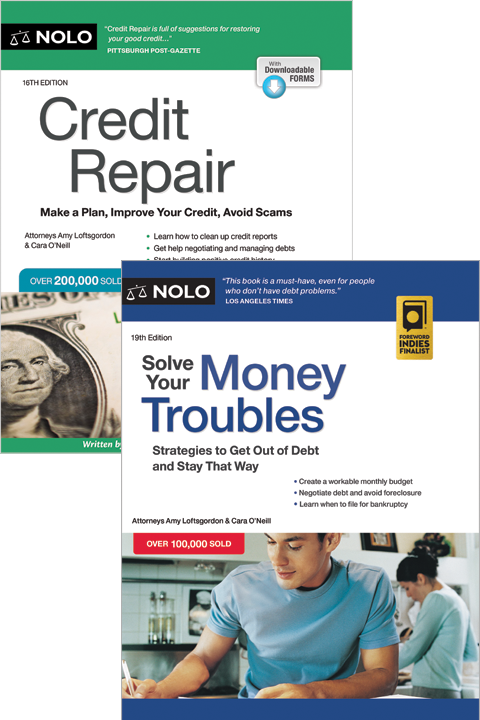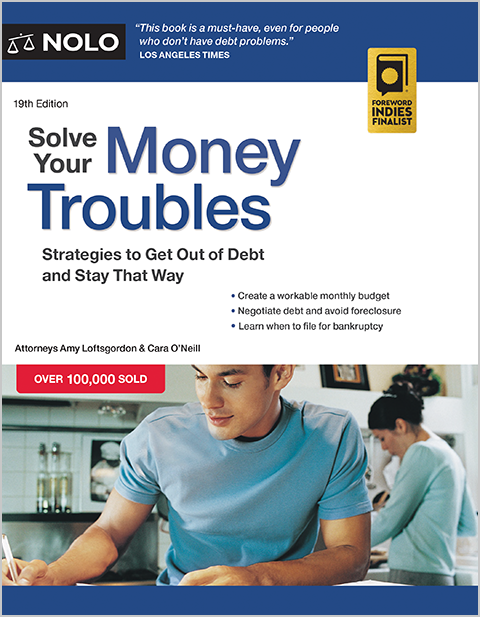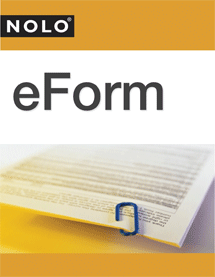If you have a student loan the federal government provided or guarantees, your loan likely falls into one of two categories: direct or indirect. Private student loans, however, are different.
Student loans that the federal government provides or guarantees usually fall into two categories: Federal Direct Loans or Federal Family Education Loans (FFELs). FFELs are also called "indirect loans." Private student loans, however, come from a bank, credit union, or private lender without government involvement. These loans are similar to any other kind of loan you might obtain from a bank or lender, like to buy a house or a car.
For most student loan borrowers, federal student loans are better than private student loans. Interest rates are typically lower, repayment options might be more flexible, and there are cancellation options. Students should use federal student loans to the extent available—after first exploring scholarship and grant availability—and consider private loans only when federal aid isn't enough to cover their education costs.
How Federal Student Loans Work
For many students, available scholarships, grants, and work options won't cover all of their college costs. So, you might need to consider taking out student loans.
What Is a Federal Direct Loan?
The Department of Education makes Federal Direct Loans. The four main types of Direct Loans are Direct Subsidized Loans, Direct Unsubsidized Loans, Direct PLUS Loans, and Direct Consolidation Loans.
Direct subsidized loans. Undergraduate students who show they need financial help can get this kind of loan. The government pays the interest on a Direct Subsidized Loan during the following periods:
- while you're in school at least half-time
- during the grace period (in most cases), and
- during a period of deferment (when loan payments are postponed).
Direct unsubsidized loans. With an unsubsidized loan, you—not the government—pay the interest during all periods. Direct Unsubsidized Loans are available to undergraduate and graduate students without having to show financial need.
Direct PLUS loans. Direct PLUS Loans are available to:
- graduate or professional students who are enrolled at least half-time at a school with a program leading towards their graduate or professional degree or certificate and
- to parents of a dependent undergraduate student enrolled at least half-time at an eligible school.
Unlike other federal student loans, a credit check is part of the application process, and applicants can't have an adverse credit history.
Direct consolidation loans. With a Direct consolidation loan, you can combine (consolidate) your federal education loans into one loan.
What Is a Federal Family Education Loan (FFEL)?
Before July 1, 2010, the federal government also guaranteed loans that private lenders made. These loans, called "Federal Family Education Loans" or "FFELs," are also considered federal student loans. Again, FFELs are sometimes called "indirect loans."
In January 2010, the government passed legislation ending the FFEL program, and no FFELs were made after June 30, 2010. So, if you took out your federal student loan after June 30, 2010, your loan is a Direct Loan.
Federal Perkins Loans
Perkins Loans were previously available to undergraduate, graduate, and professional students with exceptional financial needs. Under federal law, the authority for schools to make new Perkins Loans ended on September 30, 2017, with final disbursements permitted through June 30, 2018. Students can no longer receive Perkins Loans.
Federal Student Loans: Pros and Cons
Federal student loans have many advantages compared to private student loans and just a few disadvantages.
Advantages
Federal student loans are almost always a better choice than private student loans. Here's why:
- Federal student loans have repayment options that might lower your monthly payment.
- Federal student loans have various cancellation options.
- As of 2006, all federal student loans have fixed interest rates.
- Federal student loans are eligible for deferment and forbearance.
- While private student loans require either a good credit history or a co-signer with a good credit history, federal student loans generally do not.
- Federal student loans can be consolidated into a Federal Direct Consolidation Loan. (Private student loans can't be consolidated into this kind of loan.)
- Federal student loans don't have a prepayment penalty fee. You won't have to pay extra fees if you pay off your loans early.
Disadvantages
If you default on a federal student loan, the federal government has more options to collect from you than a private lender. The federal government can garnish your wages without first getting a court judgment. It can also intercept your tax refund and some Social Security payments.
Also, federal student loans don't have a statute of limitations. But the various repayment plans available with federal student loans make it much less likely that you'll default in the first place.
How to Repay Your Federal Student Loans
You might feel stuck in your current repayment plan if you have federal student loan debt, but you probably have more options than you think (for now). The U.S. Department of Education offers several types of student loan repayment plans. (Private student loans, however, are different; see below).
Which repayment plan you can—and should—pick depends mainly on what type of federal student loans you have and your circumstances. Not all loans qualify for every repayment plan, and not every alternative suits all borrowers.
The basic repayment plans available for federal student loans are a standard repayment plan, a graduated repayment plan, and an extended repayment plan. Also, several income-driven plans are available if your income is low or unstable or you have moderate income with very high student loan debt. Your payment amount under an income-driven repayment plan is generally a percentage of your discretionary income.
Standard Repayment Plan
Under the standard repayment plan, you'll make the same monthly payment for the life of the loan. With this kind of plan, you'll typically pay off your loan in the shortest time—up to ten years. For Consolidation Loans, however, the repayment period is up to 30 years.
The One Big Beautiful Bill Act revises the standard repayment plan, with a repayment period of 10, 15, 20, or 25 years, depending on the total amount borrowed or the outstanding amount, if the loan is in repayment. These amounts are:
- less than $25,000 (10 years)
- $25,000 to $50,000 (15 years)
- $50,000 to $100,000 (20 years), and
- more than $100,000 (25 years).
Graduated Repayment Plan
Under a graduated plan, your payments start low and increase during the repayment period, usually every two years. This option might be appropriate if your income is low when you graduate but will likely increase quickly.
Like with a standard repayment plan, the timeline is up to ten years, except for FFEL Consolidation Loans and Direct Consolidation Loans, which can have a repayment term of up to 30 years. Because you carry a larger balance at the beginning of the repayment period, you'll pay more interest than a standard repayment plan.
Extended Repayment Plan
An extended plan allows you to have fixed or graduated payments stretched over a period of up to 25 years. To be eligible for this plan, you must have an outstanding loan balance of more than $30,000.
Income Based Repayment Plan (IBR)
You must have a high debt relative to your income for the IBR plan. The payments generally are:
- 10% of your discretionary income if you're a new borrower on or after July 1, 2014 (but never more than the ten-year standard repayment plan amount) or
- 15% of your discretionary income if you're not a new borrower on or after July 1, 2014 (again, never more than the ten-year standard repayment plan amount).
If you haven't paid off your loan after 20 years (new borrowers on or after July 1, 2014) or 25 years (if you're not a new borrower on or after July 1, 2014), the government will forgive the remaining balance.
Saving on a Valuable Education (SAVE) Plan
Under the SAVE plan, the monthly payment is based on income and family size. Borrowers on the SAVE plan are temporarily excused from making payments, but interest will start to accrue on August 1, 2025.
The One Big Beautiful Bill Act eliminates this plan. Borrowers in the SAVE program can pick a new repayment plan starting in July 2026 and must pick a new plan by July 1, 2028.
Income Contingent Repayment Plan (ICR)
Under the ICR plan, your payment is the lesser of:
- 20% of your discretionary income or
- what you would pay on a repayment plan with a fixed payment over 12 years, adjusted according to your income.
Like with all income-driven repayment plans, you'll have to reapply yearly, and the payment amount will likely be adjusted. The government will forgive the remaining balance if you haven't paid off your loan after 25 years. The One Big Beautiful Bill Act eliminates this plan.
Pay As You Earn Repayment Plan (PAYE)
With PAYE, your maximum monthly payments are 10% of your discretionary income. The government will forgive the remaining balance if you haven't paid off your loan after 20 years. The One Big Beautiful Bill Act eliminates this plan.
Income Sensitive Repayment Plan (ISR)
In this plan, your payments are based on your annual income. The ISR plan is available only to low-income borrowers and only for FFEL loans. Because FFELs were discontinued in 2010, recent borrowers aren't eligible for an ISR plan.
How to Choose a Federal Student Loan Repayment Plan
Your loan servicer will automatically enroll you in a standard repayment plan unless you decide on another plan. Here's one approach for choosing a repayment plan.
Consider an Income-Driven Plan If You Qualify for Public Service Loan Forgiveness
Under the Public Service Loan Forgiveness (PSLF) program, your federal Direct Loans or Direct Consolidation loans are forgiven after you make 120 qualifying monthly payments under a qualifying repayment plan while:
- working full-time for the government
- working full-time for a nonprofit organization that's tax-exempt under Section 501(c)(3) of the Internal Revenue Code
- working full-time for a nonprofit organization that isn't tax-exempt, but the organization's primary purpose is to provide certain types of qualifying public services, or
- volunteering full-time with AmeriCorps or the Peace Corps.
All of the income-driven repayment plans count as qualifying repayment plans for PSLF. So, if you're eligible for PSLF, consider an income-driven plan. Also, you should submit a certification form every year or whenever you change jobs. The Department of Education will then let you know if you're on track for PSLF.
You can also qualify for PSLF if you choose the ten-year standard repayment plan, but if you're in this plan the entire time you're working towards PSLF, you won't have a remaining balance left to forgive after you've made 120 qualifying PSLF payments. After July 1, 2026, only payments in the ten-year standard plan qualify for forgiveness. If you are in a longer standard repayment plan, the payments don't count. So, borrowers with more than $25,000 in loans after July 1, 2026 should use the RAP plan so that they payments qualify for PSLF.
If PSLF Isn't an Option, Consider the Standard Repayment Plan (If You Can Afford It)
Under the standard repayment plan, you'll pay off your loans in ten years or less (at least for now). So, you'll pay less interest and get out of debt quicker than another repayment plan.
Look Into the Plans
One way to figure out which of the other plans might work for you is by using the Department of Education's repayment calculator or contacting your loan servicer. Find out who your loan servicer is by logging in the the Federal Student Aid website.
How Private Student Loans Work
A private student loan is a loan taken out from a bank, credit union, or another private lender to cover post-secondary education expenses and, if taken out before July 1, 2010, not guaranteed by the federal government.
Private Student Loans: Pros and Cons
Private student loans have a few upsides, but for the most part, the long list of downsides outweighs them.
Advantages
The main advantage of private student loans is that they're available when you've exhausted your ability to borrow federal loans. Unfortunately, with the rising cost of college and graduate school, many students must take out some private loans because they've maxed out on the available federal student loans.
Also, unlike federal student loans, private student loans are subject to a statute of limitations when you default. The statute of limitations varies by state, generally ranging from three to 10 years. If the statute of limitations expires, lenders have few options to collect from you.
Disadvantages
The biggest downsides to private student loans are:
- higher interest rates (typically)
- the interest rate might be variable
- less flexible repayment terms, and
- the unavailability of deferment, forbearance, and cancellation options.
Also, paying your private student loans isn't always straightforward. Borrowers with private student loans have cited numerous problems related to making loan payments, like dealing with loan servicers that:
- frequently lose payments
- misapply funds when borrowers try to pay down their loans more quickly
- fail to notify customers when accounts are transferred to new servicers, and
- engage in other practices undermining borrowers' ability to get information about and pay their loans.
If you have a complaint about a private student loan, contact the Consumer Financial Protection Bureau (CFPB).
Payment Relief for Private Student Loans
Private student loans aren't eligible for the repayment plans discussed in this article. If you have private student loans, contact your lender, loan holder, or loan servicer to learn about repayment options.
Getting Help
To learn more about federal student loans and student loans in general, visit the U.S. Department of Education's Federal Student Aid and Federal Trade Commission websites.
If you need more information or advice after visiting these websites and doing your own research on student loans, consider consulting with a student loan attorney or debt settlement attorney who deals with student loans.
Talk to a Lawyer
Need a lawyer? Start here.
How it Works
- Briefly tell us about your case
- Provide your contact information
- Choose attorneys to contact you
- Briefly tell us about your case
- Provide your contact information
- Choose attorneys to contact you



